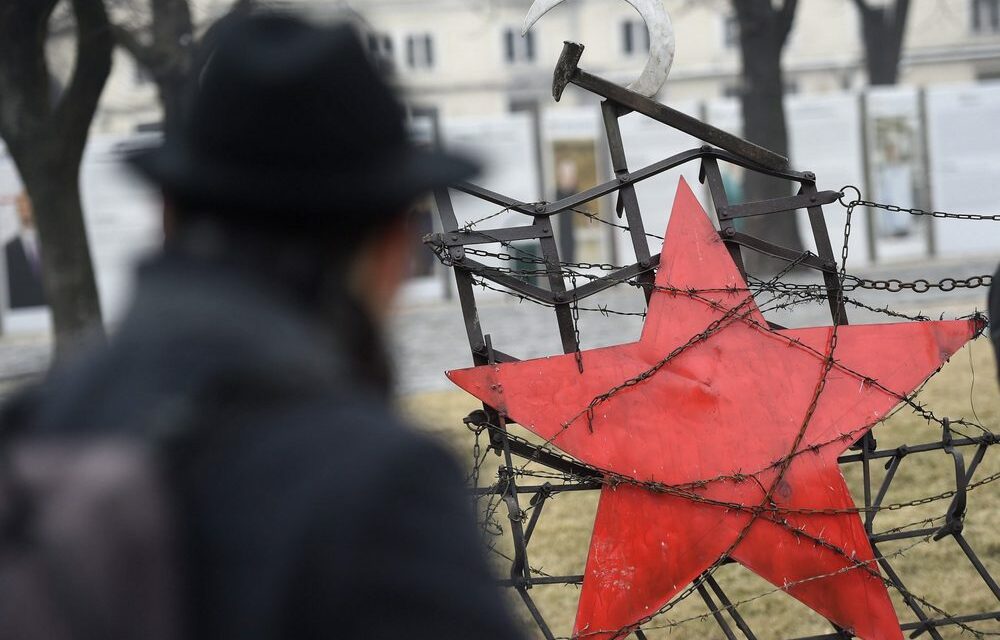"It is our duty to future generations to record the sins of the 20th century and ensure that they are never repeated" - Milan Kundera
On February 25, 1947, the Soviet occupying authorities arrested Béla Kovács, the secretary general of the Independent Small Farmers' Party (FKGP), who was protected by immunity as a parliamentarian.
The resolution of the National Assembly adopted on June 13, 2000 declared February 25 of each year as a memorial day for the victims of communism.
The date of the memorial day reminds us that on February 25, 1947, the Soviet occupying authorities arrested Béla Kovács, the secretary general of the Independent Small Farmer Party (FKGP), who was protected by immunity as a parliamentarian. This was the first step towards the establishment of a total one-party dictatorship in Hungary, which involved the intimidation of the forces that still kept their distance from the communists, the dismemberment of the FKGP, and paved the way for the removal of Prime Minister Ferenc Nagy in May.
Accused of anti-Soviet espionage and forming a counter-government, Béla Kovács was kept in prisons in Hungary and Austria until 1951, and then in 1952 he was taken to the Soviet Union, where he was sentenced to 25 years of forced labor without a trial.
He was handed over to the Hungarian authorities in November 1955, but he only regained his freedom in April 1956. During the 1956 revolution, he was a member of the second Imre Nagy government as minister of agriculture and then as minister of state. After the revolution was defeated, he looked for the possibility of reconciliation, but when it became clear to him that this was not possible, he returned to his native village in Baranya. In November 1958, under strong pressure, he agreed to become a member of the National Assembly as a representative of the People's Front, but due to his illness, he did not actually participate in politics. He died on June 21, 1959, and was rehabilitated by the Soviet authorities only in 1989. The arbitrary detention of Béla Kovács has become a symbol of the trampling of democratic rights, and his fate is an example of those who are now considered victims of communism. The bronze statue of Sándor Kligl near the Parliament was inaugurated on February 25, 2002, the 55th anniversary of his arrest and deportation.
"It is our duty to future generations to record the sins of the 20th century and ensure that they are never repeated"
- wrote the Czech writer Milan Kundera. The task of historical science is to evaluate communist dictatorships, search for and count the victims. The number of victims can only be estimated due to the lack of reliable data. The Black Book of Communism, published in Paris in 1997 and written by six authors, puts this number at around 100 million worldwide based on archival research and estimates. Monuments to the victims of communism and totalitarian regimes have already been erected in several parts of the world - from Prague to Budapest to Washington.
In Central and Eastern Europe, the number of victims of the system may reach one million, that many people lost their lives due to execution, famine or in forced labor camps.
The number of those who were physically and mentally crippled by the everyday reality of the dictatorship can be put much higher. Victims of the system were those who were interrogated and tortured, stigmatized, excluded or imprisoned, who were persecuted because of their group or religious affiliation, everyone who was deprived of the possibility of free action and choice. In 2013, the Hungarian government issued a decree on increased compensation for victims of communism.
In 2014, it was announced that a European register of the victims of communism was being prepared at the initiative and with the support of Hungarian President János Áder and German President Joachim Gauck. As the first step of the initiative, it was decided to establish a memorial site and museum data bank on the site of the House of Terror Museum in Budapest and the former Berlin Stasi (Ministry of State Security) prison, in which the names of all persecuted and victims of communism in Hungary and Germany are registered.
In 2014, the Hungarian government also proposed that a memorial museum for the victims of communism be established in Washington as a common historical legacy of the Central European countries, to the realization of which it contributed ten million dollars. The museum has been operating since 2022.
In Hungary, 2015 was declared a commemorative year for political prisoners and forced laborers transported to the Soviet Union, which was extended until February 25, 2017. The number of people deported at the end of the Second World War or after it is estimated to be between 700 thousand and 1.1 million, of whom 300 thousand never returned home. On February 25, 2021, the Hungarian National Archives published its database of people deported to the Soviet Union online, which contains about 700,000 digitized cardboard boxes containing the data of Hungarian people deported to the Soviet Union between 1941-1956. At that time, the Gulag and Gup Research Institute also began its operations, whose task, among other things, is to clarify and clarify the data of the abductees.
On the occasion of the Memorial Day for the Victims of Communism, commemorations are held all over the country every year.
MTI
Featured image: Tamás Kovács / MTI












